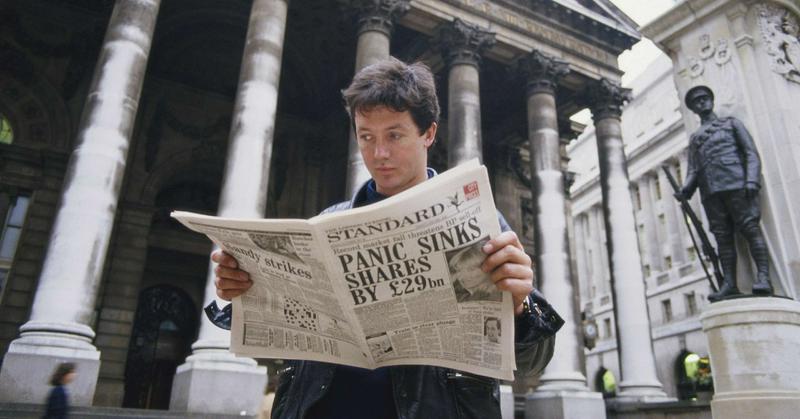Black Monday: 1987's Stock Market Crash When The World Lost $1.7 Trillion
By | October 17, 2020

Our history books are filled with details about the big stock market crash of 1929, known as Black Tuesday, that plunged the United States into the Great Depression, but stock market crashes occur so regularly that you can practically set your watch by them. Its impact might not have been quite so Steinbeckian, but Black Monday, the stock market crash of 1987, affected all 23 of the world's largest national stock markets.

A Day of Drops
In the United States, the stock market plummeted by more than 20% on October 19, 1987, but the effects of the Black Monday crash varied wildly from country to country. Hong Kong, Singapore, and Australia were hit especially hard, with falls of more than 40%, while Austria scraped by with only an 11.4% decline.
This led to a correspondingly variable response to the crash, depending on just how much of a hit the country in question had taken. For example, the central banks of the United States, Japan, and Germany took bold steps to help their economies recover, while the Reserve Bank of New Zealand, whose stock market had only seen a 15% drop on Black Monday (or Black Tuesday, in their time zone), opted not to relax their monetary policies. As a result, by February, their market had lost more than half of its value, and the crash ended up contributing greatly to the ensuing six-year recession in New Zealand.
With stock prices around the world in a free fall, the worldwide losses from Black Monday were staggering. It has been estimated that global financial losses topped more than $1.7 trillion U.S. dollars. Economists feared that the crash would trigger another Great Depression or, at the very least, a long-term period of economic instability.

What Caused The Black Monday Crash? Conspiracy Theory Edition
In the years following Black Monday, conspiracy theories have popped up to explain the mysterious failure of the complicated market. The most widespread theory suggests that a small, elite group controls the global economy through some vague combination of wealth and witchcraft. It has been claimed that, when trade slowed on Black Monday, the members of this elite mystery group manipulated the numbers behind the scenes to make it look like the market was on the rise when it wasn't.
Although the Secret Global Supervillains theory is the most popular, it's far from the only one. Others believe that the Great Storm of 1987, which did blow down more than 15 million trees in England and flood the timber market, blew down the stock market as well, while others have pointed to the unexpected rebound of the U.S. economy as evidence that Dan Rostenkowski, then-chair of the House Ways and Means Committee, arranged for the crash to clear the way for a market-punishing tax hike. Some conspiracy theorists have connected Black Monday to the Iran-Contra affair, in which the U.S. was busted selling weapons to Iran and using the funds to support Nicaraguan contras, because hearings related to the event began just before the crash.

What Really Caused The Black Monday Crash?
Unfortunately, the factors economists cite to explain Black Monday are more mundane. According to them, it was primarily the newly instituted portfolio insurance and the computer trading models that controlled it that sparked investor panic.
Portfolio insurance was designed to protect a portfolio against market risks by using short-sale stock index futures to maintain a balance, but in the late '80s, stock trading was still done the old-fashioned way. Large-scale, computer-initiated stock trading was a new concept, and the computer programs that were written to place stock orders were relatively untested.
The automated trading strategy, because of its high volume of trades, was more than the system could handle, and it created a panic among investors that depreciated the U.S. dollar. Attempts to stabilize the dollar created even more problems that ricocheted around the world for years to come.

